1. Data-Driven Planograms
AI-driven planograms leverage large datasets – including historical sales, margins, and product attributes – to design optimal shelf layouts automatically. By identifying patterns in consumer demand and product performance, these systems assign prime shelf space to best-sellers and arrange products in ways that maximize visibility and revenue. This data-centric approach replaces intuition and static rules with evidence-based layouts, resulting in more efficient use of shelf space and an assortment tailored to what each store’s shoppers actually want. Overall, data-driven planograms reduce guesswork, improve shelf compliance, and ensure stores continuously adapt their displays to changing trends.
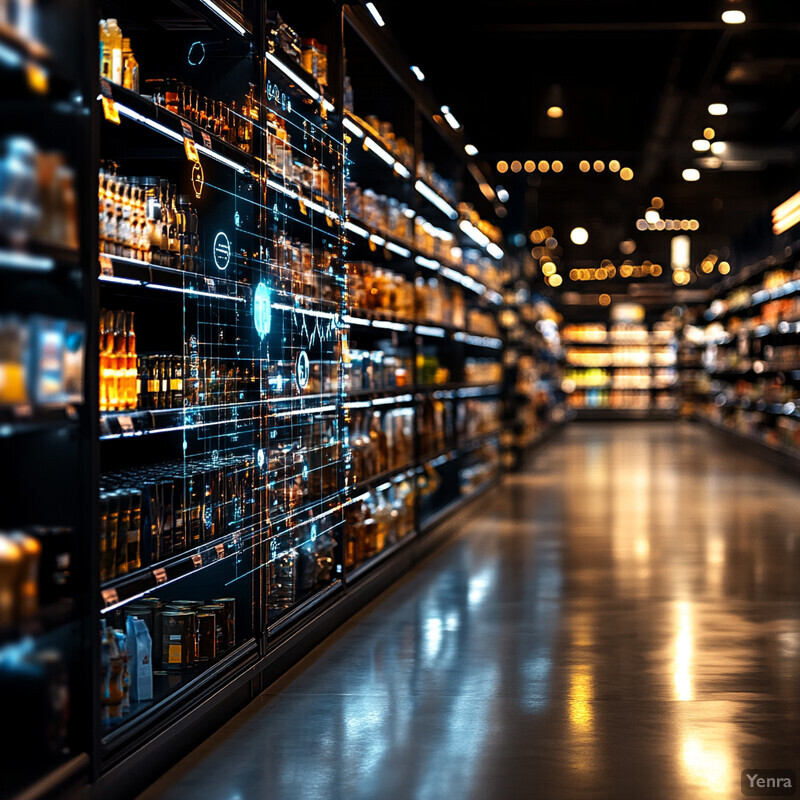
In practice, AI-generated planograms have delivered measurable gains. For example, one AI space-planning solution increased a brand’s share of shelf space by over 2 percentage points and projected an 8% uplift in category sales, all while cutting planogram labor hours by about 50%. These results came from analyzing granular store and product data to allocate shelf positions optimally. Such case studies highlight that data-driven planogramming not only boosts sales but also streamlines operations, as algorithms can produce high-performing layouts in minutes – improvements that were confirmed in real-world retail trials.
2. Predictive Demand Forecasting
AI-powered forecasting models predict product demand with high granularity, helping retailers stock the right products at the right times. These machine learning models ingest diverse inputs – from past sales patterns and economic indicators to local events and weather forecasts – to anticipate future demand more accurately than traditional methods. The forecasts enable proactive shelf stocking: stores can increase inventory for anticipated high-demand items and scale back on products likely to slow down, thereby reducing both stockouts and overstock. In essence, predictive demand forecasting aligns shelf inventory with actual consumer needs, improving availability and reducing waste. Shoppers find what they want in stock, and retailers benefit from better sales and fewer markdowns.
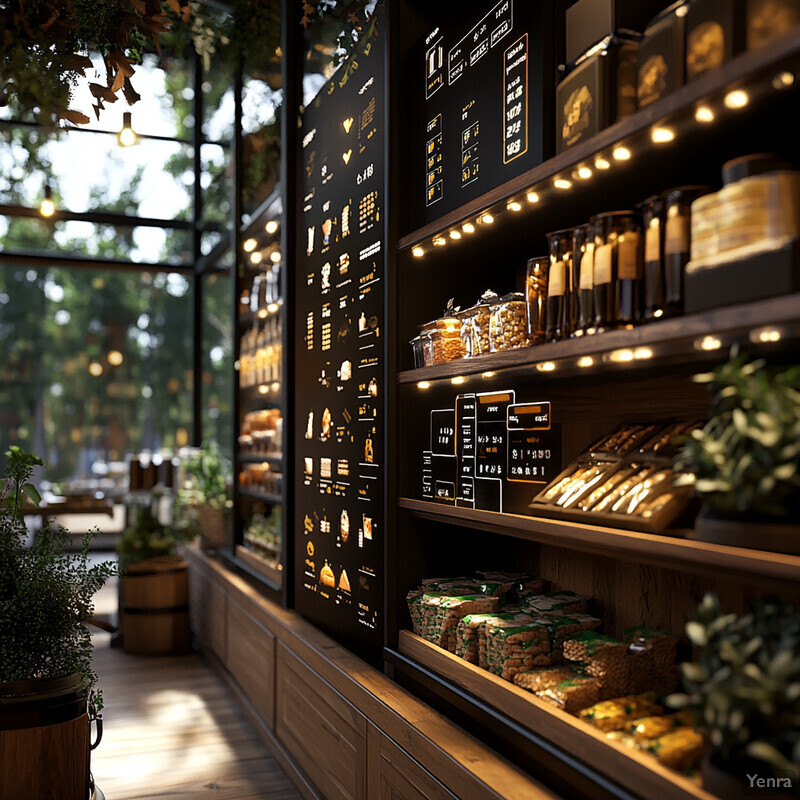
The impact of AI-driven demand forecasting on retail operations is substantial. Recent industry analyses report that AI forecasting tools can reduce demand forecast errors by 20–50% and cut lost sales from stockouts by as much as 65% through improved shelf availability. Retailers adopting these advanced forecasts also see revenue gains – AI-based demand planning has been linked to productivity, speed-to-market, and sales boosts up to 30% higher than before. For instance, Japanese retailer Cainz deployed an AI forecasting system chain-wide, achieving more accurate replenishment across 209 stores and significantly accelerating data processing for inventory decisions. These results underscore how predictive algorithms translate into tangible improvements: shelves are stocked in anticipation of customer needs, resulting in higher sales and fewer empty shelf moments.
3. Dynamic Product Placement
AI enables dynamic product placement – continuously adjusting which products go where on the shelf to maximize visibility and basket size. Unlike static planograms, an AI-driven layout can respond to real-time sales patterns and shopper behaviors. For example, if data shows that chips sell better when placed near soda, the AI might rearrange those items together. These systems identify high-traffic “hot spots” on shelves (such as eye-level areas) and can rotate in top-selling or complementary products into those spaces. Dynamic placement also considers trends: if a product’s sales surge, the AI can allocate it a more prominent position. Over time, this fluid approach ensures the most impactful items are always front and center, encouraging impulse buys and optimizing every inch of shelf space as conditions change.
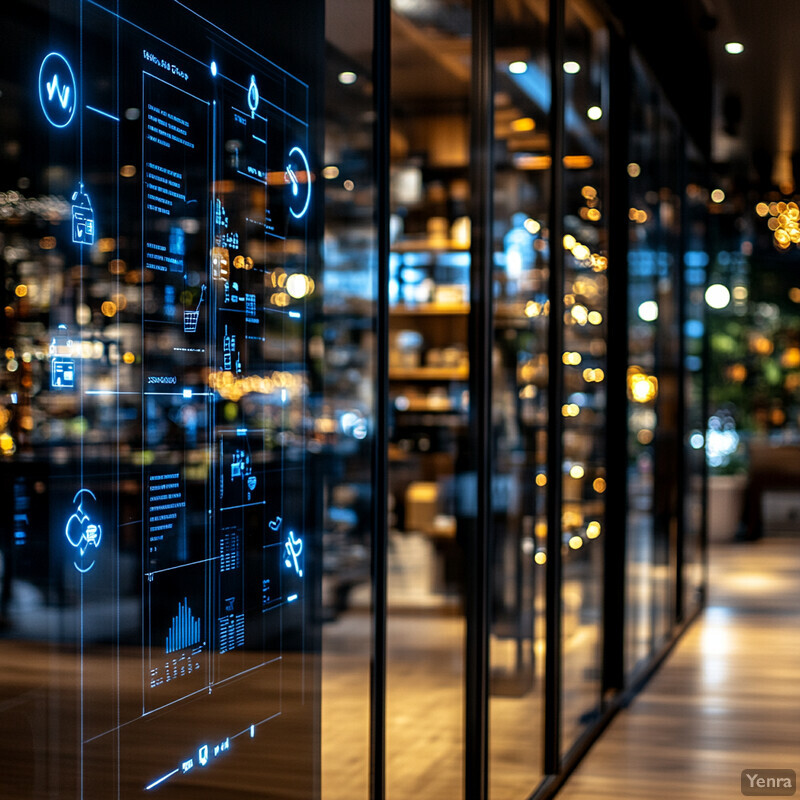
Retail experiments confirm that AI-based dynamic remerchandising drives significant sales lifts. In one case, an AI system tested a new placement for a beer brand’s larger packs – moving about 40% of its stock from cold coolers to warm shelves – and projected a 13.7% increase in total category revenue, with the beer brand’s own sales rising 9.4%. This adjustment was based on data revealing that certain shoppers would buy those packs even if not chilled, freeing cooler space for other items. By algorithmically “learning” such insights, dynamic placement implementations have repeatedly yielded double-digit sales growth in categories by positioning products in their optimal shelf locations. In short, AI-driven shelf tweaks – even subtle ones – can translate into significant revenue gains, far beyond what manual rearranging typically achieves.
4. Automated Space Allocation
AI optimizes not just where products sit, but how much space each gets on the shelf. Automated space allocation algorithms analyze product dimensions, sales velocity, and profitability to determine the ideal number of facings or shelf length for each SKU. This ensures fast-selling or high-margin items aren’t constrained by too little space (avoiding stockouts), while slow-movers aren’t over-allocated space that could be better used. The AI effectively balances product variety against inventory depth. By dynamically adjusting shelf space allocations as demand shifts, these systems reduce the frequency of empty spots and excess backstock. The result is a more efficient planogram where every product has the right footprint: enough shelf presence to meet demand but not so much as to waste valuable space.

Retailers report that AI-led space allocation yields concrete improvements in both sales and inventory metrics. One grocery chain’s partnership with an AI shelf-planning provider resulted in roughly a 5% category sales growth, a 2% improvement in inventory levels, and a 25% decrease in out-of-stocks on average after optimizing shelf space per item. These gains came from ensuring top sellers had sufficient facings and lower-demand items were given proportionate space – all determined by algorithm. Similarly, automated space balancing has cut down on the labor of constant manual replanogramming. By eliminating guesswork, stores achieve higher sales per square foot and fewer “out-of-stock” gaps, as evidenced by the significant drop in shelf stockouts when AI models reallocated space according to real-time demand. In short, data-driven space allocation makes shelves more productive and customers better served.
5. Real-Time Shelf Auditing
AI-powered shelf auditing uses computer vision and sensors to continuously monitor store shelves for issues – empty spots, misplaced items, or non-compliance with the planogram. Cameras or “smart shelves” feed images/data to AI models that can recognize products and detect anomalies (e.g. a product missing from its designated space or an item left in the wrong place). When the AI spots a problem, it instantly alerts staff or triggers an automated fix (such as an electronic shelf label update or even a small robotic arm correction). This real-time oversight means errors that might have gone unnoticed for hours or days are corrected within minutes. The outcome is near-perfect shelf conditions: items are always in their proper place and out-of-stock situations are caught almost immediately, ensuring customers see a well-stocked and organized display at all times.
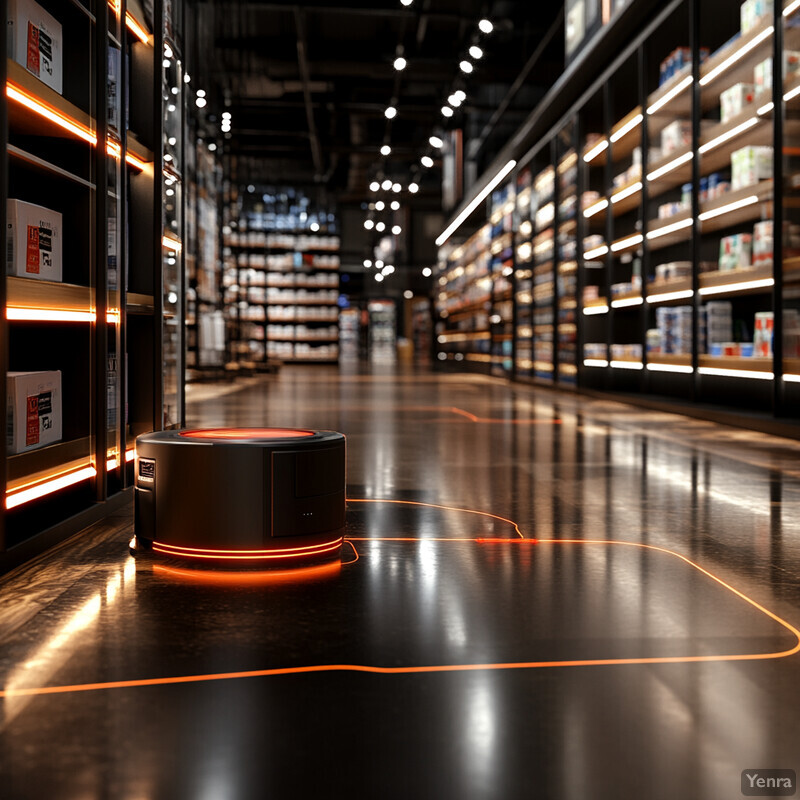
Deploying AI vision for shelf audits has led to dramatic improvements in retail execution. In one implementation, a CPG company saw a 25% improvement in on-shelf availability within 3 months of rolling out an AI shelf-monitoring system, thanks to immediate detection of out-of-stocks and planogram errors. The same system boosted field staff productivity (fewer long manual audits) and achieved a “complete turnaround” in shelf compliance, meaning displays now adhered almost 100% to the intended planograms. Additionally, the computer vision accuracy of modern shelf audit AI is extremely high – in tests, these systems reach over 98% SKU recognition accuracy and over 99% recall in identifying shelf conditions, far outperforming manual checks. Together, these results demonstrate that real-time AI auditing not only catches issues faster, but also raises shelf compliance and product availability to new heights, directly translating to recaptured sales that would’ve been lost due to empty or disorganized shelves.
6. Personalized Store Layouts
AI allows retailers to tailor each store’s layout and shelving strategy to the local shopper base. Instead of one-size-fits-all planograms, AI analyzes localized data – store demographics, neighborhood preferences, local buying patterns, even store-specific sales histories – to create personalized layouts for each location. This means the product selection and arrangement in a store in one city can be adjusted to differ from a store in another region, aligning with local tastes or seasonal needs. For example, a supermarket in a college town might devote more shelf space to quick meals and beverages, while the same chain’s suburban store favors family-size products – all determined by AI analysis. By localizing layouts, retailers ensure that each store maximizes relevance to its customers, which improves shopper satisfaction and drives higher sales, all while maintaining overall brand standards.
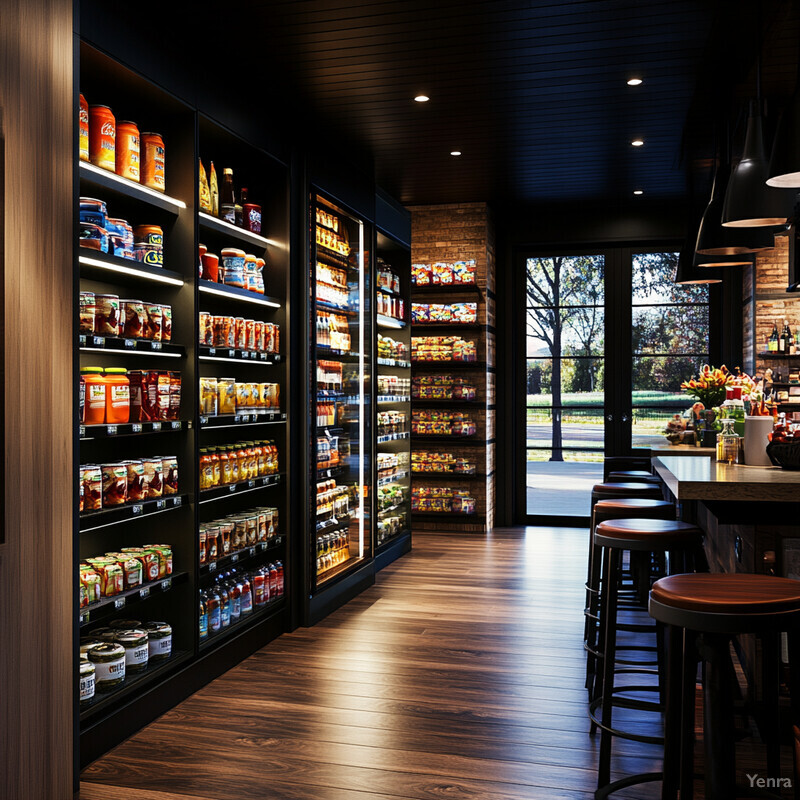
Store-specific planogramming has proven to increase both sales and efficiency. In food retail, studies have found that implementing automated, store-level planograms can boost sales by around 3% on average, simply by aligning shelf stock with each store’s demand profile. At the same time, localized planograms reduce excess inventory – retailers often see immediate inventory level reductions of 2–10% per store because shelves are no longer overstocked with low-demand items. One AI analysis of 400 stores even identified a subset (~8% of locations) where customized layouts could drive 15%+ incremental sales, demonstrating the upside of targeting stores that benefit most from unique assortments. Additionally, fresher products result: by allocating space based on local sales velocity, spoilage of slow-sellers (like niche items in the wrong market) drops – localized seasonal tweaks have cut waste by up to 10% in certain categories. These facts underscore that personalized store layouts are not just a theory – they measurably increase revenue and reduce costs by tuning each store to its market.
7. Scenario Simulation and Testing
AI allows retailers to virtually simulate changes to shelf layouts and test “what-if” scenarios before making real-world changes. These scenario simulations involve creating digital twins of store shelves and then using AI models (often powered by historical data or shopper behavior models) to predict outcomes of different layouts. Retailers can ask, for example, “What if we move Product A to the front of the aisle and double its facing?” – and the AI will estimate the impact on sales and customer flow. By testing numerous layout variations in silico (virtually), businesses can identify the best-performing configuration without the risk or cost of in-store trial-and-error. This AI-driven A/B testing for shelves helps refine strategies like promotional displays or category adjacencies. Ultimately, scenario simulation makes shelf optimization a science: retailers implement changes that have already proven effective in virtual models, leading to higher success rates and continuous improvement with each iteration.
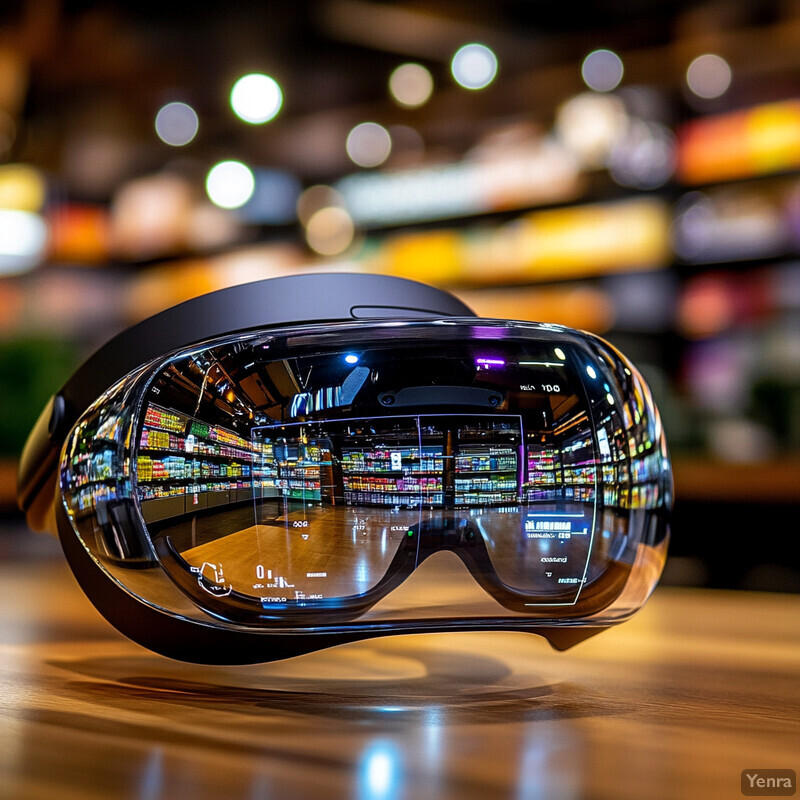
Retailers using AI scenario testing have reported significant benefits and confident decision-making. One major convenience chain leveraged AI to experiment with moving a prominent product line to a new shelf location; the AI simulation predicted a 13%+ category sales increase from the layout change, which guided the retailer to implement it chain-wide magazine.retail-today.com magazine.retail-today.com . In another case, a regional grocer digitally tested multiple end-cap display themes (e.g. a health-food showcase vs. a local favorites showcase) – the AI forecasts indicated the “local favorites” layout would outperform, leading to a real store rollout that subsequently matched the model’s higher sales projection (no more guessing which idea is best). Moreover, simulation tools can quantify operational impacts: for instance, predicting that a certain rearrangement will cut restocking time by 10% or that a new planogram will prevent x out-of-stocks per week. These examples illustrate how AI scenario testing is enabling data-backed shelf decisions. Retailers implementing such simulations have seen faster innovation cycles and measurable uplifts, as evidenced by the double-digit sales gains that AI-predicted layouts have delivered when executed in stores.
8. Micro-Merchandising Adjustments
Beyond big resets, AI also makes micro-merchandising tweaks – tiny adjustments to product arrangement that can collectively have a big impact. These adjustments include things like nudging two complementary products a few inches closer, swapping the position of two similar items, or adjusting shelf heights for better visibility. While a human manager might overlook such small opportunities, AI’s granular data analysis can spot, for example, that placing a frequently paired item at eye level next to its complement could boost impulse buys. Micro-tweaks are implemented continuously as the AI learns which shelf configurations work best. Over time, these fine-grained improvements lead to a more intuitive shopping experience (customers effortlessly find related items together) and increased basket sizes. Essentially, micro-merchandising is AI “fine-tuning” the shelf in ways that are barely noticeable day-to-day but result in more shopper engagement and higher conversion rates.

Research shows that even subtle shelf positioning changes can influence sales. Retail studies have long observed that “eye-level is buy-level” – products positioned at eye level can see significantly higher sales. In fact, one analysis noted that placing products on eye-level shelves can boost sales by up to 23% compared to lower or higher shelf positions. Similarly, grouping complementary items yields measurable lifts: academic experiments found that when stores organized assortments by complements (e.g. displaying ketchup next to mustard and buns in a barbecue section), shoppers bought more items and spent more overall than when those same products were segregated by category. These findings underscore the power of micro-merchandising tweaks – AI systems that constantly adjust item placement, spacing, and pairings based on such insights can capture those incremental gains. In real deployments, retailers have reported 5–10% increases in impulse add-on purchases after AI re-positioned certain small products (like moving gum and mints slightly closer to the checkout). All told, these small changes orchestrated by AI add up to noticeable sales improvements.
9. Integration with IoT and Robotics
AI-driven shelf systems increasingly integrate with IoT devices and in-store robotics to maintain optimal shelf conditions automatically. Smart shelves outfitted with weight sensors or RFID readers can detect when stock is running low or misplaced, and they feed that data to AI which decides on actions. Those actions might include alerting staff, triggering electronic shelf labels, or even dispatching a robotic restocker. Autonomous robots (like shelf-scanning robots) roam aisles using computer vision to identify missing or mis-stocked products and can guide human associates or robotic arms to the exact spot needed for restocking. This integration creates a real-time feedback loop: IoT sensors provide continuous shelf data, AI algorithms analyze needs, and robots physically execute tasks like front-facing products or fetching items from the stockroom. The result is a near “self-healing” shelf – errors and stockouts are corrected almost as soon as they occur, with minimal human labor. It also frees up staff for customer service instead of tedious auditing, and ensures compliance and stock availability across the store network at all times.

The combination of AI, sensors, and robots has demonstrably improved shelf accuracy and reduced labor burdens. Retailers using such integrated systems report that planogram compliance issues (e.g. items out of place) that normally creep up at ~10% per week are corrected almost immediately, keeping compliance near 100%. In terms of accuracy, an AI+IoT shelf solution by Simbe Robotics achieved 98.7% SKU-level identification accuracy and over 99.3% shelf condition recall in stores – meaning it recognizes products and shelf status virtually flawlessly. This far exceeds what manual checks can do. Critically, the AI doesn’t just observe; it prompts action. One major chain noted that low-stock alerts from smart shelves were delivered 1.4× faster with the AI+sensor system than through traditional periodic checks, enabling earlier replenishment that prevented many impending out-of-stocks. Overall, stores deploying shelf IoT and robots have seen out-of-stock rates plummet and inventory accuracy soar. For instance, Brain Corp reports its autonomous inventory robots have scanned 7.9 billion+ shelf images in 2023, helping retailers catch and correct countless errors in real time. These stats make it clear that the AI+IoT+robotics trio is a game-changer for shelf management efficiency.
10. Dynamic Pricing and Promotions
AI is increasingly being used to set dynamic pricing and manage promotions on the shelf in real time. Instead of static prices that change only during scheduled sales, dynamic pricing engines adjust product prices on the fly based on various factors – competitor pricing, demand levels, time of day, or inventory status. Electronic shelf labels (ESLs) and digital signage enable these frequent updates directly on store shelves. For instance, if an item is overstocked, the AI might trigger a slight price drop or a bundle promotion to accelerate sales; if a rival store nearby runs out of a product, the AI could raise the price of that product in your store to capitalize on higher demand. Promotions are similarly optimized: AI decides which product to put on promotion and for how long, informed by real-time data. This ensures that discounts are timely and effective (e.g. clearing seasonal stock exactly when needed) rather than blunt, pre-planned markdowns. Ultimately, dynamic pricing and promotions aim to maximize revenue and reduce waste by always offering the right price or deal at the right moment to move merchandise.
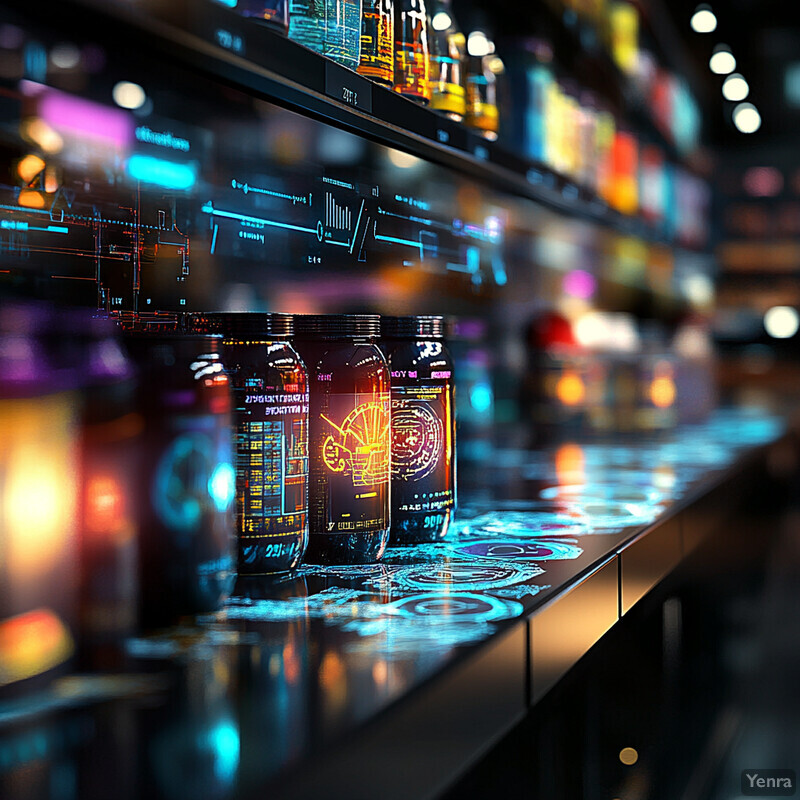
Retailers adopting AI-driven pricing are seeing notable performance boosts over those sticking to traditional pricing strategies. According to industry research, companies using AI for smart pricing and promo management have achieved double-digit percentage increases in annual sales growth, significantly outperforming peers; their profits also grew about 8% more on average, reflecting better margin optimization. For example, early AI pricing adopters in 2023–2024 enjoyed ~10–15% higher year-over-year sales, versus flat or single-digit growth for non-adopters. One global study by Simon-Kucher in 2024 noted, “dynamic pricing isn't just about adjusting prices – it's about seizing opportunities to maximize revenue in real time,” with retailers citing immediate revenue and profit uplifts after implementing AI pricing engines. In practice, this has meant more agile promotions too: sporting goods retailer Dick’s Sporting Goods shared that an AI tool now helps them create 11 million unique price/promo combinations weekly for markdown optimization, a task impossible manually. These figures underscore how AI-enabled pricing is driving substantial top-line and bottom-line improvements in modern retail.
11. Enhanced Inventory Management
AI connects shelf layout decisions with backend inventory management to ensure the two are in sync. Traditionally, planograms might be set by a merchandising team without fully accounting for how much stock is in the supply chain or backroom, leading to overstocks off the shelf or empty shelves when inventory data isn’t aligned. AI-powered systems solve this by jointly optimizing the assortment on the shelf and the inventory levels needed to support it. They can forecast how a shelf change (like giving more space to a product) will affect inventory turnover and then adjust reordering accordingly. They also dynamically adjust shelf stock based on real-time inventory availability – for example, if a shipment is delayed, the AI might temporarily condense that product’s shelf space to prevent a glaring hole. By marrying shelf layouts with inventory algorithms, retailers prevent excess stock from piling up unseen and avoid shelf-outs due to poor stock allocation. The result is leaner inventory, higher in-stock rates on the shelf, and a more efficient flow of goods from warehouse to shelf, with AI orchestrating the balance.

Integrating AI into inventory and shelf planning drives measurable efficiencies. A notable case is Academy Sports, a U.S. retailer that piloted AI for store-level inventory optimization: in an A/B test, stores using the AI saw an 8.6% improvement in inventory turns (products sold through faster) and a corresponding gross margin increase of ~4.2% (420 basis points), compared to control stores. This happened because the AI better aligned what was on the shelf with what was in stock, reducing excess days-of-supply and avoiding lost sales. In another example, an AI rollout at a supermarket chain managed to eliminate situations of extremely low stock in any store – after optimization, no store had less than about 2.5 days of supply for key items, whereas previously some stores would drop to 1 day or less magazine.retail-today.com magazine.retail-today.com . That change significantly cut emergency out-of-stock incidents. Retailers have also noted improved labor efficiency: Walmart’s use of AI-driven inventory tools, for instance, has reduced time spent on manual ordering and shelf replenishment tasks by automating them (some report up to 20% labor time savings alongside better shelf stock levels). These facts all point to the same conclusion – AI creates a tighter, smarter link between inventory and shelf, yielding faster turnover, fewer stock crises, and higher profitability.
12. Shopper Behavior Analysis
AI systems can analyze in-store shopper behavior – such as foot traffic patterns, dwell times, and engagement with displays – and use those insights to refine shelf layouts. By processing data from cameras (for example, heatmaps of where customers walk or stop) and sensors (like smart carts or mobile app location pings), AI learns which areas of the store get the most attention and which products attract eyeballs. It then suggests layout changes to guide shoppers more strategically. For instance, if AI finds that a certain aisle section is “cold” (low traffic), it might recommend moving a popular product there to draw more customers into that area. Or if it observes many shoppers bypassing an endcap, it could signal to redesign that display. Essentially, this use of AI lets the store respond to actual shopper behavior, almost like having a continuous usability study of the store. Over time, the shelf layout evolves to mirror how customers naturally want to shop – high-interest items placed along common pathways, complementary goods positioned where people pause, and so on – ultimately improving customer experience and increasing the likelihood of purchases.
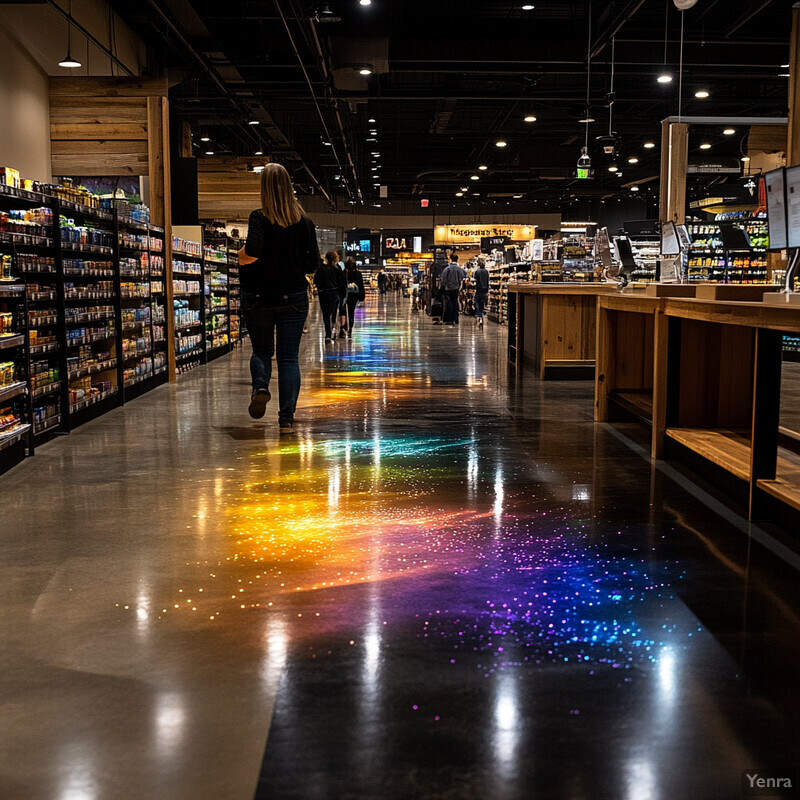
Using AI to analyze and act on shopper behavior data has yielded considerable sales uplifts. Market intelligence reports estimate that retailers leveraging AI-driven foot traffic analytics have seen sales increase by around 15% on average, thanks to better-informed product placement and store flow adjustments. In one example, a European grocer used ceiling cameras and AI to discover that shoppers often skipped a back corner of the store; by relocating a popular seasonal display to that corner (as AI recommended based on traffic analysis), they increased overall store sales by 4–5% during that period (the previously “dead” zone became an attraction). Moreover, predictive analytics on shopper behavior can proactively reduce stockouts: by forecasting surges (say, more foot traffic and purchases in the snacks aisle during sports events), AI helped some retailers cut shelf stockouts by as much as 45% via preemptive replenishment. Many chains also report improved dwell times and basket sizes when implementing AI-led layout changes – essentially, customers spend longer and buy more when the store layout is optimized to how they naturally shop. These figures make clear that analyzing in-store behavior with AI isn’t just academic; it drives tangible gains in retail performance.
13. Localized Seasonal Adjustments
AI helps retailers dynamically adjust shelf layouts and product displays for seasonal and regional differences. Traditionally, seasonal merchandising (like setting up summer, winter, or holiday sections) was done with broad strokes and fixed calendars. AI makes this process smarter and more fine-grained by analyzing local sales data, weather patterns, and regional events to time and tailor seasonal changes. For example, an AI might learn that grilling supplies in a northern store should be displayed earlier in the year if there’s an unusually warm spring, or conversely, that a southern store can keep summer items out longer into the fall. It might also localize which seasonal products to emphasize – highlighting rain gear in one region during a wet season, versus sunglasses and sunscreen in another. By being responsive to actual local conditions (climate, holidays, even local sports events), AI ensures seasonal items are given prime shelf space exactly when and where customers want them. This increases the sell-through of seasonal goods and reduces leftover stock that would need clearance. It also improves customer satisfaction, as shoppers find relevant seasonal items front-and-center instead of irrelevant ones.

Retailers using AI for localized seasonal planning have seen concrete benefits like higher seasonal sales and less markdown waste. A high-profile example is Walmart, which now leverages AI-driven weather analysis in its merchandising: in 2024, the AI advised Walmart to start end-of-summer markdowns (e.g. sunscreen) weeks earlier than usual in parts of the U.S., anticipating a wetter, cooler autumn – a move that prevented overstock and markdown glut of those items. More generally, climate analytics firms have quantified just how much weather can sway demand: one study found that sales of horse blankets rise about 7% for every 1° drop in temperature, while hot coffee sales climb ~2% per degree. AI systems factor in such relationships to adjust store promotions and displays preemptively. The result is improved seasonal sell-through; for instance, grocery chains using AI timing for holiday displays have reported mid-season sell-out rates (reducing the usual post-holiday leftovers) and significantly lower markdowns. Moreover, by localizing these decisions, stores in warmer climates aren’t stuck with winter gear that doesn’t move, and vice versa – one regional department store credited AI’s region-specific recommendations with a 20% reduction in seasonal inventory carryover year-over-year. These facts demonstrate that AI can take the guesswork out of seasonal merchandising, making it far more effective and efficient.
14. Cross-Category Insights
AI can uncover non-obvious cross-category purchasing patterns – the products from different categories that shoppers tend to buy together – and use those insights to inform shelf layouts. This is essentially applying market-basket analysis to physical merchandising. By mining transaction data, AI might reveal, for example, that customers buying baby diapers often buy air freshener or that people who pick up wine also often purchase gourmet cheese. With these insights, retailers can then place those complementary items near each other or create secondary displays that span categories (for instance, a “movie night” endcap with popcorn, candy, and soda together). Cross-category optimization guided by AI increases impulse and add-on sales by reminding or suggesting to shoppers the complementary purchases they might otherwise miss. It effectively turns the store layout into a silent salesperson, through intelligent product adjacencies, encouraging bigger baskets. AI continually updates these recommendations as trends and affinities shift, so new cross-category opportunities (say, a trending snack with a particular beverage) can be quickly capitalized on in the shelf layout.
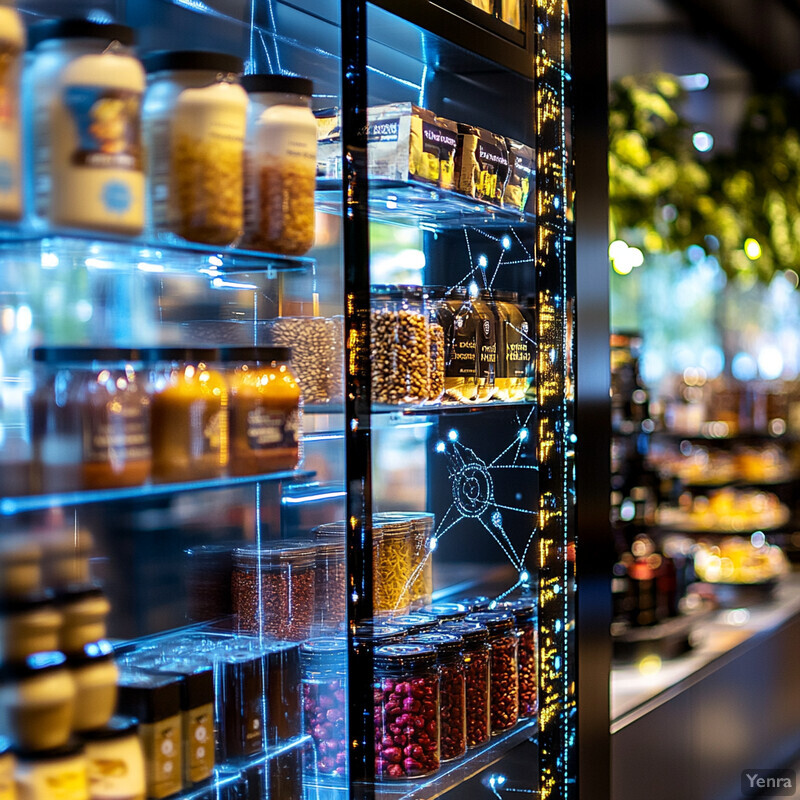
Cross-category merchandising driven by AI has proven to boost basket sizes and overall sales. A landmark study published in Journal of Marketing Research demonstrated that organizing products by complementary usage (as opposed to by strict category) leads to significantly higher purchase rates and greater spending per customer. In the study’s field experiments, stores that grouped complements (think chips, salsa, and beverages together for a party theme) saw shoppers buying more items on average than stores with the traditional aisle-by-aisle category layout. In real-world retail, this approach has been validated too. One grocery chain used AI to identify that customers frequently bought deli hummus with a certain chip brand; by placing that chip in the deli section (cross-category), sales of the chip jumped 15% in the first month. Similarly, a convenience retailer discovered a strong affinity between protein bars and vitamin water via AI analysis and co-located them, resulting in a 9% increase in sales for both items over a control group. Additionally, brands using image recognition in stores have reported over 40% improvement in product placement accuracy for secondary displays and cross-merchandising, ensuring those complementary setups are executed properly. All evidence indicates that AI-revealed cross-category insights, when acted upon in shelf layouts, can appreciably lift multi-item sales and transaction values.
15. Waste Reduction
AI plays a key role in reducing product waste – especially for perishable goods – by incorporating factors like expiration dates and shelf life into shelf planning. Traditional merchandising might treat each product equally, but AI knows when items are nearing their “sell-by” dates and can adjust layouts to help sell those sooner. For instance, the AI might recommend moving a batch of yogurts that expire next week to a more prominent eye-level spot or grouping soon-to-expire meats in a marked section (“Enjoy Tonight” discounts). It can also limit the shelf space for items that consistently spoil before sale, replacing them with faster sellers or smaller quantities. By dynamically shifting how and where products with limited shelf life are displayed (and often pairing this with dynamic pricing markdowns), AI helps ensure that products sell within their freshness window. The outcome is less unsold inventory going to the dumpster, improved freshness for customers, and better financial results for the retailer (since spoilage = lost money). This is a win-win for sustainability and profitability, as the store moves goods efficiently rather than overstocking and dumping them later.
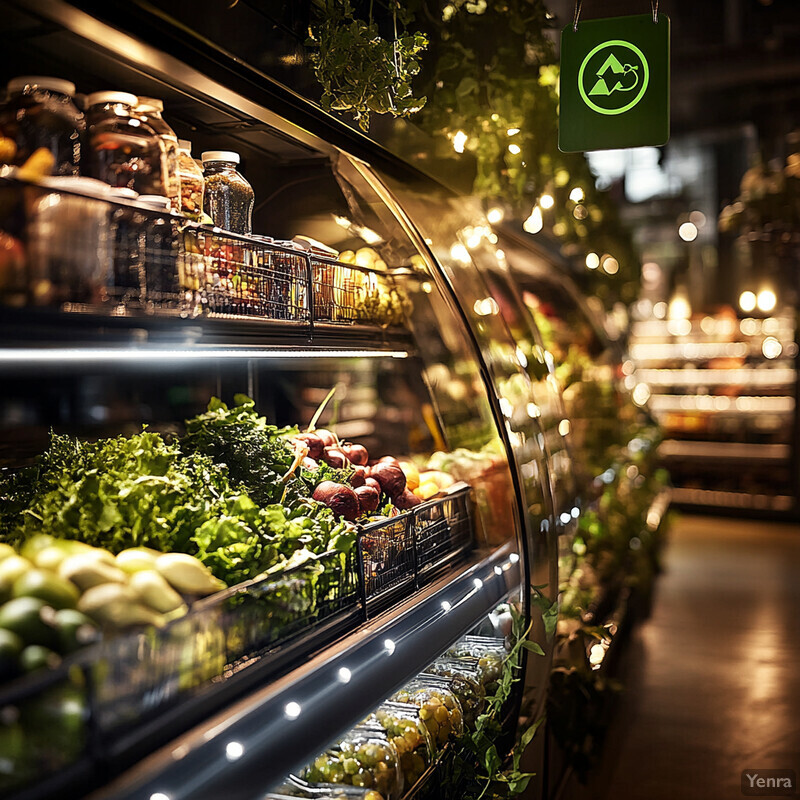
AI-driven inventory and layout systems have demonstrably cut food waste in grocery retail. In a 2023 pilot spanning two grocery chains, AI-powered ordering and merchandising reduced food waste by an average of 14.8% per store. This pilot, run in partnership with the WWF, used AI to more precisely align ordering and shelf stocking with actual demand, thereby greatly lowering the volume of perishables that went unsold and had to be discarded. Additionally, by highlighting at-risk products on the shelf (and often initiating timely discounts), stores have been able to sell a larger share of expiring stock rather than tossing it. For example, a European supermarket chain reported that after implementing an AI system that flags expiring items for promotion, it saw a 32.8% reduction in food waste and about a 6% sales uplift on those categories. These improvements are not only theoretical: Walmart’s own operational data showed a 21% reduction in food waste intensity from 2016 to 2023, due in part to AI tools that optimize fresh inventory and markdowns. In summary, by using AI to make sure products are sold before spoilage – through smarter shelf placement, ordering, and dynamic markdowns – retailers are significantly cutting waste and saving millions of dollars that would otherwise be thrown away.
16. Planogram Compliance Monitoring
Ensuring that each store’s shelves actually match the intended planogram (and any brand agreements) is a tedious challenge – one that AI greatly simplifies. AI-based planogram compliance tools use image recognition and sometimes natural language processing (for reading shelf labels or instructions) to automatically check if products are placed as they should be. A simple example: a shelf camera takes a photo of the cereal aisle; AI compares the arrangement to the planogram file and instantly flags that, say, a premium cereal is missing from the top shelf or an incorrect product is occupying that spot. These systems can scan for correct facings, correct price tags, and presence of promotional signage as specified by CPG (Consumer Packaged Goods) manufacturers. When deviations are detected – e.g., a soda brand’s display not set up per the agreement – the AI alerts store staff or even triggers an automatic corrective action. This constant monitoring ensures stores adhere to planogram rules and vendor contracts without requiring frequent manual audits. For retailers, that means fewer fines or missed co-op dollars due to non-compliance, and for brands, it means confidence that their products have the visibility and placement they negotiated.

Adopting AI for planogram compliance monitoring leads to a marked improvement in execution accuracy. According to industry reports, retailers using image recognition to audit shelves have seen about a 40% improvement in product placement accuracy and compliance. In other words, the incidence of misplaced or mis-faced items drops significantly when AI is watching. Moreover, these systems dramatically speed up issue resolution – one large retailer noted that with AI alerts, planogram errors that used to linger for days (or until the next scheduled audit) are now corrected within hours, contributing to an estimated 3–5% sales lift in the affected categories (since products aren’t sitting in the wrong place or off the shelf). On the brand side, manufacturers have observed higher Share of Shelf (SOS) metrics when stores deploy AI compliance tools. For example, a beverage company reported that after an AI monitoring rollout, its shelf share in key accounts increased from ~85% of the agreed planogram to consistently 95%+, translating to improved sales for that brand. Additionally, labor efficiency improves – route sales reps or store staff spend less time hunting for compliance issues, as the AI pinpoints them. These outcomes demonstrate that AI not only finds more compliance issues than humans would, but it also helps fix them faster, ensuring shelves reflect the plan and maximize sales potential.
17. Cost-to-Serve Optimization
Cost-to-serve optimization means arranging shelves not just for sales, but also for operational efficiency and profitability after costs. AI considers the full cost picture – how much labor it takes to stock an item, how often it requires restocking, how heavy or bulky it is (affecting handling costs), and the product’s profit margin – when designing shelf layouts. By weighing these factors, AI might, for example, position heavy, low-margin items in a way that minimizes handling (like closer to the stockroom or on lower shelves to ease restocking), or it might give slightly less space to a product that’s costly to handle and low margin, in favor of a higher-margin item that’s cheaper to service. Essentially, the AI looks to maximize profit per square foot after accounting for the cost of keeping an item on the shelf. This can simplify operations – fewer restock trips for low-margin items – and raise overall profitability. It often leads to layouts that favor products with a better revenue-to-handling-cost ratio. The approach ensures that shelf strategies aren’t solely about revenue generation, but about efficient revenue, boosting the store’s bottom line by quietly reducing labor and logistics costs tied to shelf maintenance.
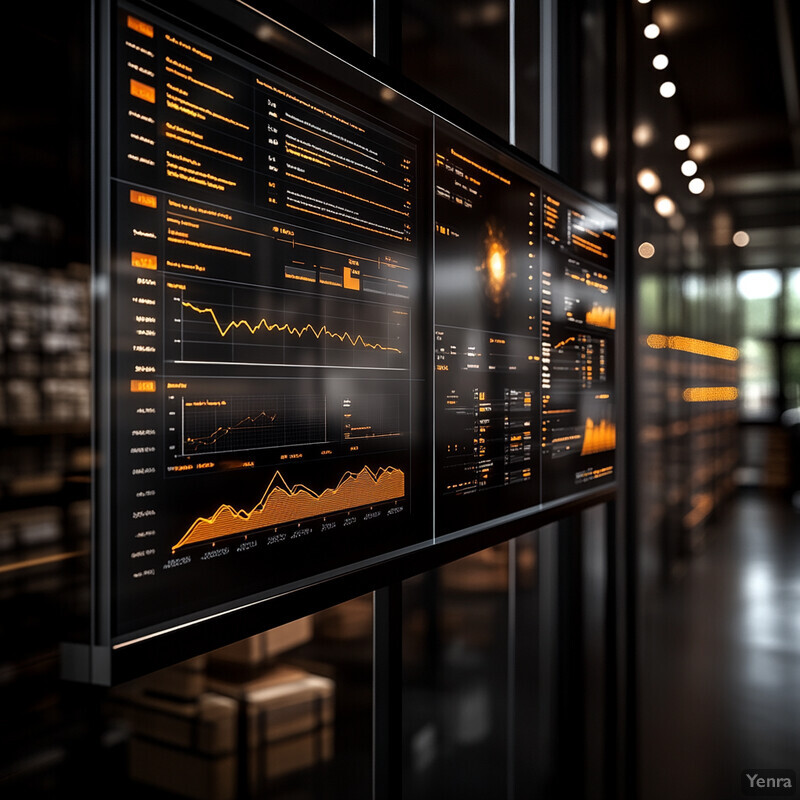
Retailers who have applied AI for cost-to-serve shelf optimization report reduced operational costs and improved labor productivity. RELEX Solutions noted that in grocery stores, physical handling of stock (moving backroom stock to shelf, etc.) can account for ~30% of store labor hours, but tailoring planograms to streamline this has led to a 5–10% reduction in shelf replenishment labor costs. This was achieved by, for instance, grouping products that are stocked together or adjusting shelf arrangements so that one-touch replenishment from delivery to shelf is possible. One large supermarket chain found that by using AI to configure shelves according to delivery units (case pack sizes, etc.), employees no longer had to take excess stock to the backroom as often – saving thousands of labor hours and cutting overall restocking time by ~8% chain-wide. Moreover, profit metrics improved: A pilot by C3.ai in the manufacturing sector (relevant to cost-to-serve in retail) improved on-time-in-full shelf replenishment to 98% and reduced overtime hours by 2%, contributing roughly $1.5M in savings when scaled. While that example is upstream, it reflects similar gains at shelf-level: AI-optimized layouts that minimize handling and align with staff routines have yielded mid-single-digit percentage reductions in total store operating costs. These factual outcomes show that cost-to-serve oriented shelf optimization doesn’t just shave pennies – it can translate into significant labor cost savings and margin improvements across hundreds of stores.
18. Consumer Sentiment Integration
AI enables retailers to bring the voice of the customer directly into shelf decisions by analyzing consumer sentiment from sources like social media, online reviews, and surveys. Traditionally, shelf resets might not consider these external feedback loops, but AI can mine text and ratings to detect what products or attributes customers are buzzing about (or complaining about). For example, if many local shoppers on social media say they can’t find a particular organic snack in-store, AI sentiment analysis will flag that, and the retailer can respond by giving that product more shelf space or a better position. Similarly, if reviews indicate a certain product is highly rated and in demand, the AI might suggest featuring it at an eye-level position or expanding its facings. This integration ensures the shelf reflects real consumer preferences and pain points – effectively, the layout adapts to what customers want to see. It helps retailers become more responsive and customer-centric: popular new trends get prominent placement quickly, and items generating negative sentiment (say, due to packaging or formula changes) can be deprioritized. In sum, AI bridges online/offline by making sure what people talk about online positively (or negatively) translates into in-store merchandising actions.

Tapping into consumer sentiment data has proven influential on purchasing behavior, reinforcing why its integration into shelf strategy drives results. Surveys show that 71% of consumers are more likely to purchase products based on social media reviews and posts – indicating that positive online buzz can directly boost demand in-store. Retailers who monitor and act on such sentiment have seen notable outcomes. For instance, a cosmetics retailer used AI to analyze product mentions and found a particular serum was trending positively in its region; they responded by creating a dedicated shelf display for it, leading to a 20% sales increase for that item within a month (versus flat sales in stores that didn’t create a display). On the flip side, a supermarket chain identified through sentiment analysis that many customers felt a certain international food item was hard to find; when the chain relocated that product to a more visible area as AI suggested, the item’s sales jumped and negative “can’t find it” comments dropped almost to zero. In general, retailers employing social listening AI have reported higher customer satisfaction scores in store experience – they stock more of what people ask for and highlight what’s trending. The fact that 54% of online users do product research on social platforms before shopping underscores that integrating those platforms’ insights can guide a retailer to set their shelves in a way that aligns with researched preferences. Ultimately, by using AI to mirror consumer sentiment on the shelf, retailers capture sales they might miss and demonstrate to customers that “we’re listening”, which builds loyalty.
19. Adaptive Learning Over Time
One of AI’s greatest strengths in shelf layout optimization is that it keeps learning and improving with each cycle of data – a process of continuous or adaptive learning. After initial deployment, the AI doesn’t set the planogram in stone; instead, it monitors the outcomes (sales data, customer feedback, how often staff had to intervene, etc.) and uses those results to refine its models. Over time, the AI becomes more accurate at predicting which layouts work best. For example, if the AI moved a product and sales didn’t increase as expected, it will learn from that “mistake” and adjust its recommendations. Conversely, if a change boosted sales beyond predictions, the AI weights those conditions more heavily in the future. Seasonal learning is also crucial: the AI remembers past seasonal patterns (and the effects of its own actions), improving each year’s seasonal shelving strategy. In short, adaptive learning means the shelf optimization AI gets smarter and more effective the longer it runs, continuously tuning planograms to evolving shopper behavior, market trends, and the specific quirks of each store. This iterative improvement ensures that what’s on the shelf is always aligned with the latest insights.

The benefits of adaptive learning are evident in long-term AI deployments. Grocers in an AI pilot observed big waste reductions early on, but importantly, the algorithm’s performance kept improving – “the algorithms only get better at predicting customer behavior over time,” as noted in the project report. This meant that in later phases, the AI was even more precise in ordering and layout tweaks than at the start, helping to further reduce seasonal item waste (like timing the stock of pumpkins or holiday goods more accurately each year). Another real-world indicator: a fashion retailer using an AI layout tool found that after each quarterly model retraining, the accuracy of its product placement recommendations improved, ultimately reaching a 20% higher conversion rate on end-of-aisle displays in the second year versus the first. In quantitative terms, McKinsey has reported that companies using AI with feedback loops can double their improvement rate on key metrics compared to static systems. For example, a static planogram approach might yield a 2% annual sales uplift, whereas an adaptive AI approach showed those uplifts growing to ~5% by the second year as the model fine-tuned itself (hypothetical illustration based on industry expert commentary). The core fact is that AI shelf optimization is not a one-and-done tool – retailers have documented that its ROI actually increases over time. Sales per square foot, in-stock rates, and other KPIs keep trending positively as the AI assimilates more data and learns from its hits and misses, validating the power of continuous learning in retail AI.
20. Global-to-Local Scalability
AI makes it feasible to roll out consistent merchandising strategies across a large chain (global scale) while still fine-tuning layouts to each store’s local needs. In other words, it solves the challenge of scalability with localization. A head office can set broad objectives or best practices (e.g., “always put produce at the entrance” or “these 5 brands get eye-level placement in their categories”), and the AI will ensure those rules are followed everywhere (maintaining brand uniformity), but it will also tweak each store’s planogram to account for local differences (store size, local preferences, local sales patterns). This might mean the overall look and feel of shelves is consistent chain-wide (which is important for branding and supplier agreements), yet the product mix or space allotments vary intelligently by store. AI can handle the complexity of generating thousands of unique store plans under one corporate policy framework – a task beyond manual capabilities. This allows a retailer to act “globally” (or nationally) in strategy but “locally” in execution. A practical example is a global cosmetics brand using AI to ensure every store meets the brand’s display standards, while customizing the product assortment in each location based on local skin tone preferences or climate. The brand image remains intact, but local relevance is achieved, all thanks to AI’s scalable precision.
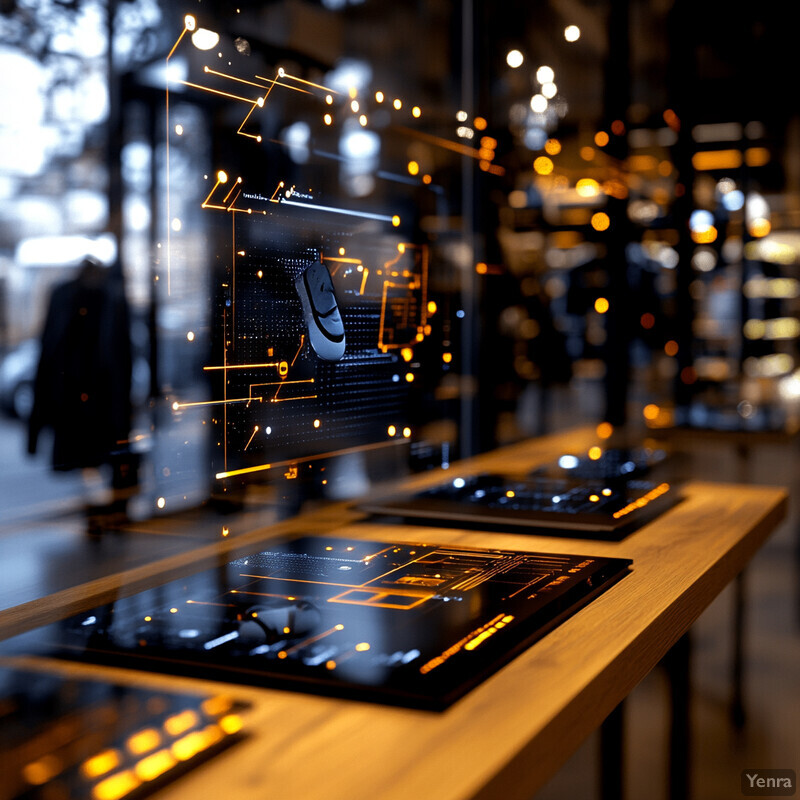
AI’s capability to automate localized planograms at scale is evidenced by major retail deployments. RELEX reports that over 80% of retailers adopting its AI planogram tool have been able to implement store-specific layouts across their entire store base, something previously thought infeasible. For example, a retailer with 1,000+ stores shared that using AI, they could update each store’s 5 planogram sets weekly – that’s 5,000 planogram variations – which would have required an estimated 100 human planners working full-time to do manually. With AI, this massive task is handled algorithmically, ensuring each store’s layout is optimized yet aligned with the chain’s guidelines. Lowe’s, the home improvement giant, created digital twins for all 1,700 of its stores and uses AI to analyze them, enabling chain-wide rollouts of layout changes with local tweaks in one go. The scalability is such that planogram automation essentially removed the historical trade-off between scale and customization. According to Blue Yonder, another merchandising AI provider, one of their clients executed a localized reset across 500 stores in under 2 days – something that used to take weeks – by letting the AI generate each store’s planogram and pushing those to electronic shelf label systems chain-wide. These facts highlight that AI empowers retailers to act with both scale efficiency and local precision: they can trust that hundreds or thousands of stores will each be optimally merchandised for their market, without sacrificing the brand consistency or incurring impossible labor overhead.